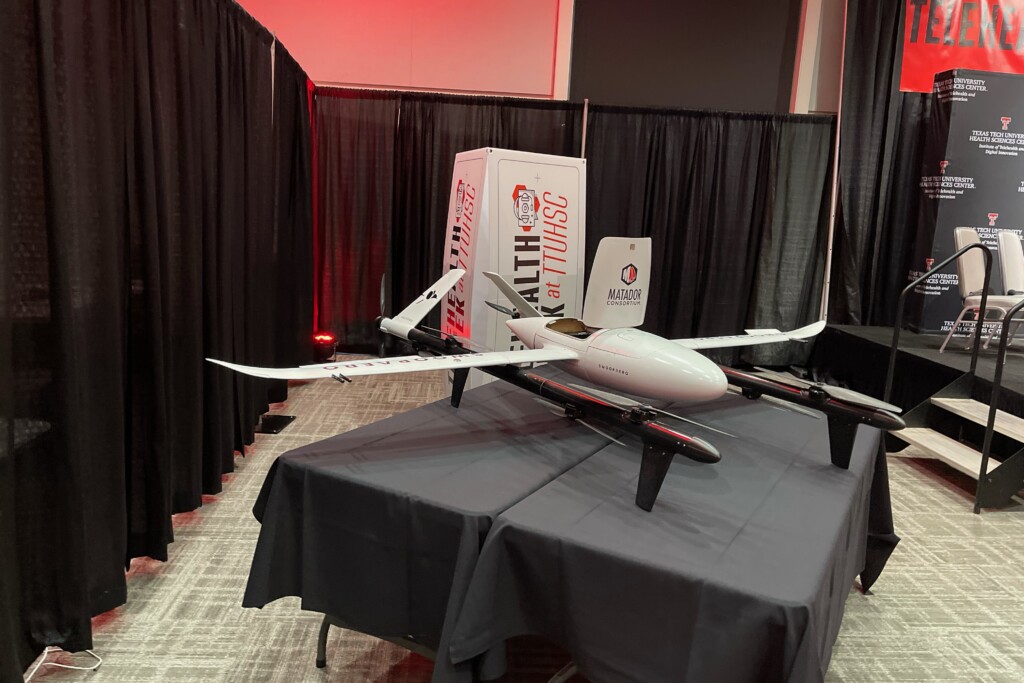Every year, thousands of donated organs don’t reach patients in need in part because the organs can’t be moved quickly enough, but a local partnership is working to utilize drone technology to deliver donated organs across Texas.
Dallas-based Southwest Transplant Alliance, the local organ procurement organization responsible for large swaths of the state, is working with the Matador Consortium to one day put organs on unmanned drones. Matador was formed by the Texas Tech Health Science Center and technology consulting firm 2THEDGE to expand drone use in healthcare.
Drones, or unmanned aircraft systems (UAS), allow organs to be moved quickly across long distances between organ procurement organizations like STA and hospitals where transplants occur. The partnership could be especially powerful for Texas’ 774,000 rural patients, who might be hours from an OPO or hospital. STA’s designated service area for organ procurement includes much of East Texas, most of West Texas, and parts of the Gulf Coast, making logistics burdensome.
STA works with 10 transplant centers and has recovered more than 35,000 organs and enhanced the lives of more than 100,000 in 40 years of operation. The drone technology will likely start with kidneys, the most durable organs. Depending on the storage method, they still need to be transplanted in under 24 or 48 hours after donation. Other organs need to move even more quickly. Before 9/11, organs could be transported in the cabins of commercial flights, but now they must be placed in cargo, making logistics more challenging.
The drones transporting organs are not the remote-controlled helicopter-looking vehicles you might see at the park. These are fixed-wing, vertical take-off vehicles with 8-12 foot wingspans that look more like airplanes than typical drones.
Traffic, commercial flight delays, unsafe weather, a lack of charter pilots, or high transportation costs are hurdles to increasing the number of organs that can be donated when relying on traditional transportation methods. According to the Health Resources and Services Administration, around one in four kidneys is discarded in the US. STA and Matador want drones to make sure more people get life-saving organs.
“We have a strong commitment to use innovation to drive more equitable access and to ensure that every gift of life goes to every single donor,” says Tyson Harmon, founder of 2THEDGE and the Matador UAS Consortium. “Part of that equation is on-demand transportation resources, not being as reliant on couriers or commercial aviation, and having another tool in the bag to provide transportation resources.”
Realistically, Harmon says the partnership is three years away from scheduled and reliable organ drone transportation, but the work to make it happen is already underway. Early steps include testing the aircraft large enough to transport organs, clearing the way for safe air paths for the drones (likely following electricity corridors and rail lines), and regulatory hurdles. In addition, the organs need to be tested to see if they remain transplantable and maintain cold storage during drone travel. Research organs, donated blood, and other medical supplies are already part of demos being run all over the state. STA will join those advocacy and testing efforts by donating research organs and studying their impact.
Drone technology has arrived in North Texas in a big way. Last month, Walmart teamed up with on-demand drone delivery provider Wing to start delivering Walmart items from two stores in North Texas, allowing it to deliver goods to 60,000 homes. Walmart delivers products via drones in seven states and 36 stores on the way to 10,000 deliveries. Wing also has a partnership with Texas Health Resources and CVS to deliver health supplies.
The rest of the world is embracing drone technology for healthcare access as well. In Malawi, drones have been delivering medical supplies for around a decade, making 25,000 deliveries in three years with drones that have traveled hundreds of thousands of miles.
In addition to being a boon for patients, the drone delivery industry creates and requires new maintenance and repair jobs. Matador is working with South Plains College in Lubbock to create a certification program that can supply the workforce to support the growing industry.
“The technology is there; it just has to be proven. We just need the momentum to help remove some of these barriers within the system,” says Doug Butler, chief operating officer of Southwest Transplant Alliance. “Drones could be the perfect opportunity to remove those barriers that we’re facing regarding organ logistics. This is a higher stakes situation than retail drones, but that makes it even more important to get there.”
Author







